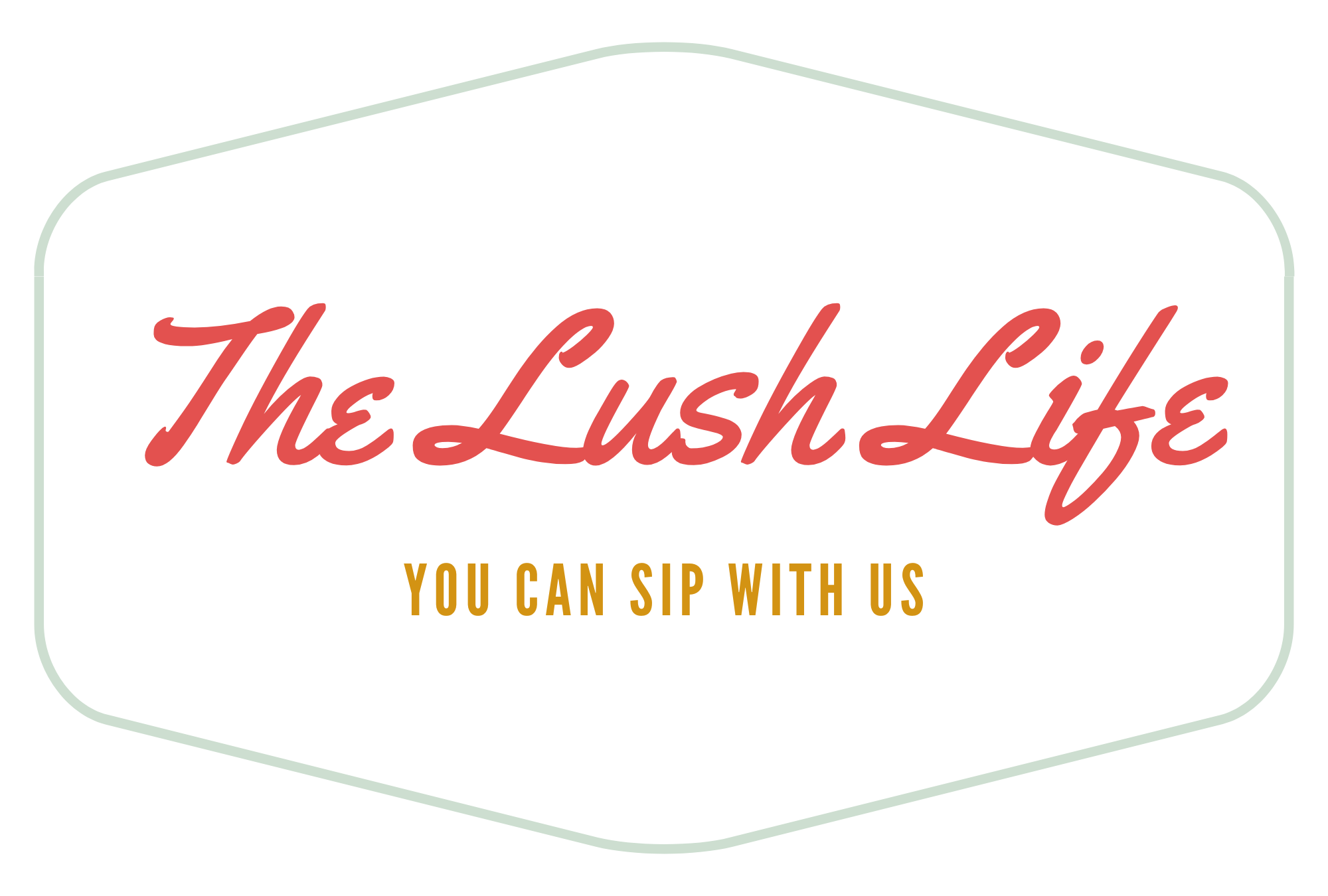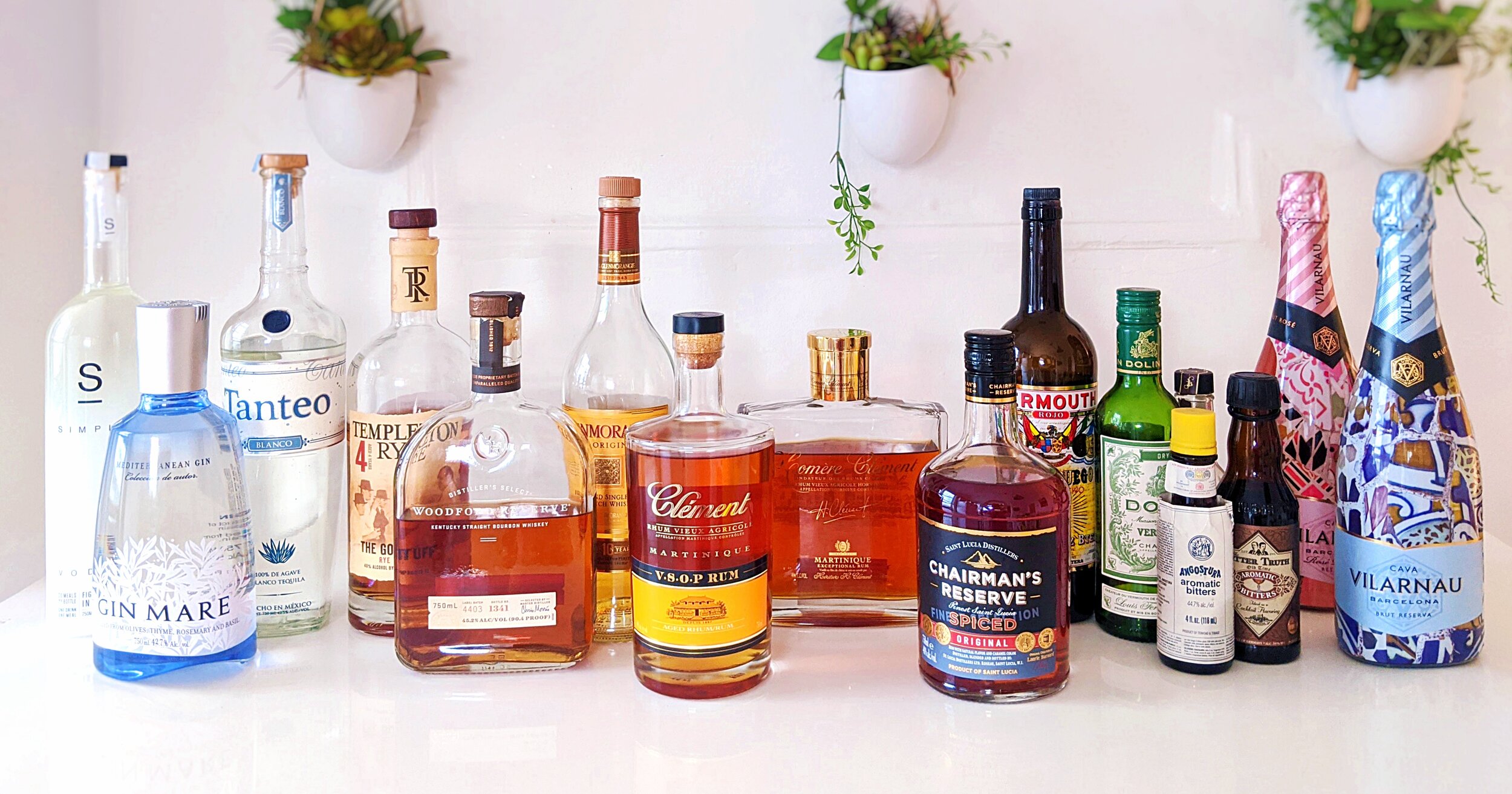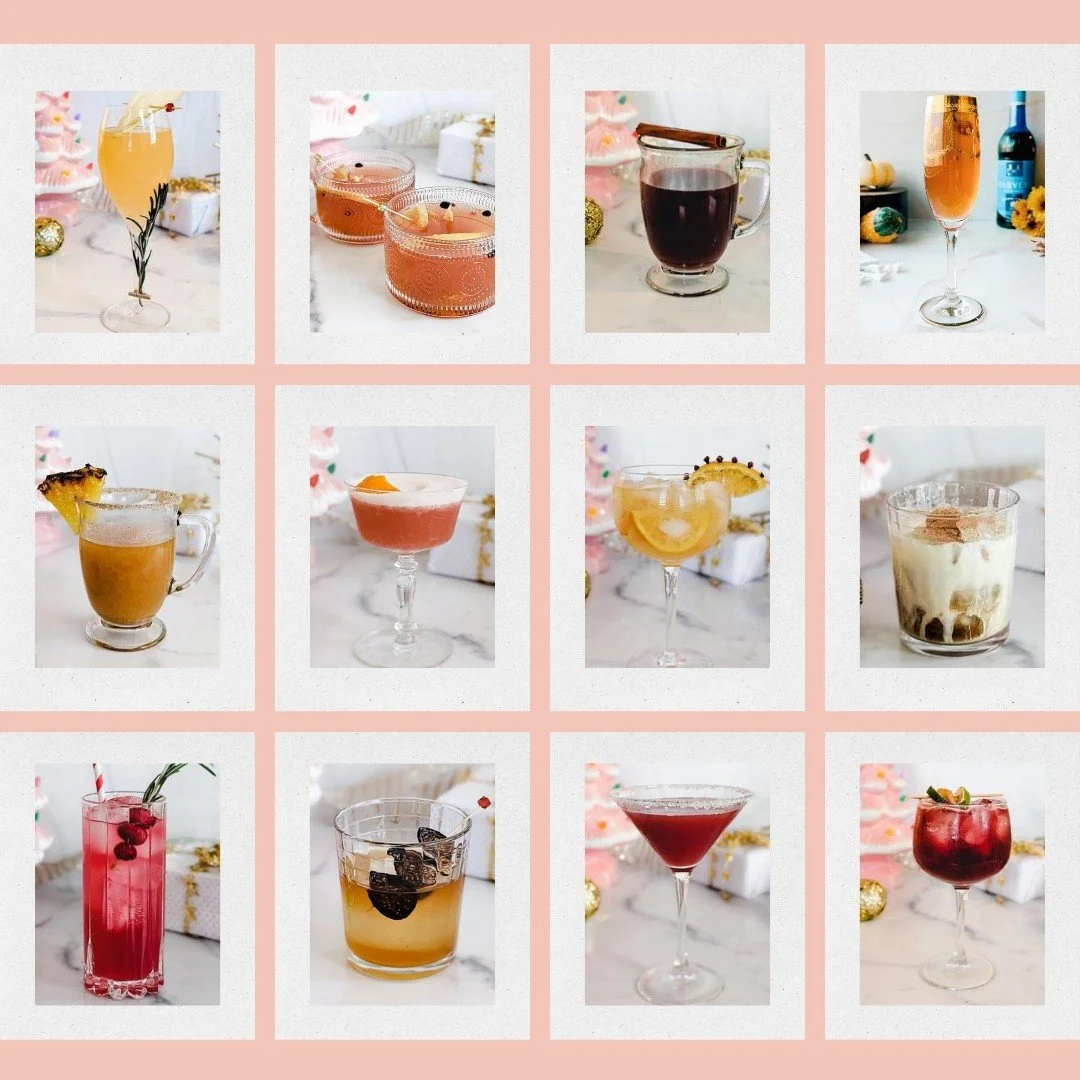What You Need to Set Up A Complete Home Bar
image via goldbarcart.com
You know you’re an actual adult when you’re inspired to have a real home bar: it’s so lovely to be able to fix yourself a properly grown-up cocktail.
But if you’re not a spirits expert, stocking a home bar can be daunting-- trust me, until a few years ago, my home bar consisted of a random dusty bottle of peppermint schnapps someone left behind after a party, and an almost-empty bottle of cheap vodka. We all have to start somewhere!
I’ve learned a lot about spirits as a professional sommelier, so I’m going to walk you through everything you need to have a well-stocked home bar, including my favorite brands in each spirits category. This can get expensive, so don’t be afraid to build it bottle by bottle and take your time.
In case you need a home for all the great spirits you’re going to start collecting…
To make it easy, I’ve split this into four categories: clear spirits, brown spirits, accessories, and sparkling wine (since I use it so much as a cocktail ingredient).
Here’s how to set up and stock a home bar in 4 simple steps:
STEP 1: Clear Spirits
Vodka, Gin, and Tequila
Vodka
Vodka is a spirit made from ethanol (distilled from wheat, corn, potatoes, vegetables, fruits, roots, or barley) and water. The actual definition of vodka in the US is ‘a neutral spirit without distinctive character, aroma, taste, or color.’ That’s right, the whole point of vodka is to be flavorless! This makes it excellent as a neutral base for mixed drinks, where its flavor is meant to blend seamlessly into the background.
The vodka currently on my bar cart is Simple Vodka: not only is it high-quality (and the bottle is gorgeous which is perfect for a bar cart!), but the mission behind the brand is really impactful. For every bottle sold, Simple provides 20 meals to those in need in the US through direct support of the local and national hunger relief organizations (that comes out to a bit more than 1 meal per drink!). Simple Vodka is made in America from locally sourced Idaho Russet potatoes, and the distillery uses sustainable energy sources and recycles their wastewater to minimize the impact on the environment.
Gin
You can think of gin as the original flavored vodka: first, the base material is fermented and distilled to make it completely neutral and flavorless, water is added (so, at this stage it’s basically vodka), then it’s flavored with juniper berries (all gin must by definition have some level of juniper) and other botanicals. Sometimes the juniper and botanicals are distilled with the neutral base, and sometimes they’re infused into it after distillation (this is known as a ‘compounded’ gin vs. a ‘distilled gin’.) Juniper has a distinctive piney taste that can also be herbaceous and floral.
The gin currently on my bar cart is Gin Mare from Spain. Spain is highest per capita consumer of gin in the world (Spanish ‘gin tonic’ culture is genuinely a whole movement!). It has a Mediterranean-inspired recipe of botanicals that include olives, thyme, rosemary, and basil. It’s herbal, spicy, and floral, definitely a savory style of gin.
Tequila
Tequila is distilled from the blue Agave plant, and by definition, must be made in Mexico. For the purposes of this post, I’m focusing on the clear ‘Blanco’ style because it’s the most neutral for cocktail-making; other styles like Reposado and Anejo are aged in casks and will pick up a golden color. Agave is a succulent that’s actually a member of the lily family; there are 166 different species of agave, but only the Weber Blue (named after the German botanist who first classified the species) can be used to make Tequila. Blue Agaves take a minimum of six years to mature; when they’re harvested, the hearts are roasted to break down the starches into simple sugars for fermentation and then distillation.
The tequila currently on my bar cart is Tanteo. Locally grown in the Jalisco region, home of 90 percent of Mexico’s tequila production, the agaves are handpicked and distilled twice to make an 85 proof tequila that’s really versatile in mixed drinks. Tanteo also makes a jalapeno-infused version that’s really great in a spicy margarita!
Shop clear spirits:
STEP 2: Brown Spirits
Whiskey and Aged Rum
The main difference between clear and brown spirits is that brown spirits are barrel-aged (that’s where they get their color-- well, at least the good stuff; cheap brown spirits can be infused with caramel color) and they develop a range of bold, complex flavors. Brown spirits aren’t meant to disappear into cocktails: they are meant for sipping, or to be an essential flavor component in a cocktail (like a Manhattan or Old Fashioned).
Whiskey
The whiskey family contains many different types, but here are the three in my home bar: Bourbon, Rye, and Scotch. An easy way to think about whiskey is as distilled beer! Grains (barley, corn, rye, and/or wheat) are brewed to break down the starch into simple sugars, which are then fermented (so, at this stage, we have a beer)-- and then the whole batch gets distilled and aged in charred casks.
Breaking it down a little further: there are two main categories of whiskey: single malt and blended. Blended whiskeys are a blend of various already-aged batches created by a Master Blender to express a specific flavor profile (like blended wines). Single malts are made from a single type of grain— malted barley-- and are from a single distillery.
Bourbon Vs. Rye
Bourbon and rye are both blended whiskeys, and it’s important to learn the difference between the two! Bourbon must be American (95 percent of the world’s bourbon is made in Kentucky), and the blend of grains (called the mash bill) must be at least 51 percent corn. Rye has no geographical designation-- it can be made anywhere-- and must be at least 51 percent rye. Flavor-wise, bourbon is often smoother and more mellow, while rye is spicier.
The bourbon currently on my bar car is Woodford Reserve, from the oldest distillery in Kentucky. The art of making fine bourbon first took place on the Woodford Reserve Distillery site, a National Historic Landmark, in 1812. There are notes of honey and spice, leather, toasty oak, and a hint of butterscotch. The rye currently on my bar cart is Templeton Rye from Templeton, Iowa. There’s a cool history behind the brand: in the 1920s, residents of the town became outlaws, supplying bootleggers with small-batch rye during prohibition. In 2006, descendants of the original distillers re-started the brand! A great story to tell if you bring a bottle to a party.
Scotch
Scotch is a whiskey from Scotland (surprising how few people know this!), and I’ve gotten more into single malt scotch the more I have tried. The single malt scotch currently on my bar car is Glenmorangie. Made from 100 percent malted barley, it’s aged for ten years in ex-bourbon casks (bourbon casks can only be used once for bourbon by law, so lots of them go on to a second life in other whiskey categories). The flavor profile is soft, mellow, and creamy.
Barrel-Aged Rum
Rum is distilled from either sugarcane molasses or fresh sugarcane juice. When the distillate is aged in oak barrels, it becomes rich and luxurious and can be sipped solo as you would a fine cognac! The rum currently on my bar cart is Rhum Clement VSOP. This is made from pure sugarcane juice and aged a minimum of four years in virgin Limousin barriques and re-charred Bourbon casks. Warm caramel and soft spice aromas and an off-dry palate full of coconut custard and banana creme brulee flavors with a slightly spicy finish make this my new favorite rum discovery. So good!
Shop brown spirits:
STEP 3: Accessories
Vermouth and Bitters
I call these accessories because while they aren’t the primary base spirits you need to stock, they are the cocktail ingredients that give the extra flavor and flair.
Vermouth
Vermouth is a fortified and aromatized wine. Basically: wine spiked with brandy, infused with herbs and spices, and sweetened. There are two main varieties: red (sweet) vermouth, which originally hails from Italy, and white (dry) vermouth. You can’t make the classic cocktails (i.e., Martinis and Manhattans) without vermouth! Red vermouth is also fab as an aperitif over ice with an orange slice.
Bitters
Bitters are aromatic, alcohol-based infusions of bittering botanicals (gentian root, cinchona bark, and cassia are common) and flavoring agents like fruit peels, spices, dried flowers, and herbs. They’re made by steeping the botanicals in high-proof alcohol-- and since alcohol is an excellent preservative, bitters have an almost infinite shelf life! They’re sold in small bottles and meant to just use a drop or dash to add complexity to cocktails. The most classic is Angostura, but now there are so many different kinds: try lavender, habanero, or even chocolate bitters!
Shop Accessories:
STEP 4: Sparkling Wine
I included sparkling wine as a home bar component because I so frequently use it to make cocktails: spritzes, French 75s, mimosas, bellinis, I could go on. No home bar is complete without it. You should ALWAYS have a bottle on hand in case of people unexpectedly stop by-- it’s excellent to toast with in case of an impromptu celebration, and fun to drink with potato chips and popcorn for a festive-yet-casual hangout. You don’t have to break the bank: options like Cava, Prosecco, and American sparkling wines are a wallet-friendly alternative to Champagne.
Shop sparkling wine:
Disclosure: If you buy something through my links, I may earn an affiliate commission, at no cost to you. I only feature things I truly love here. Thank you for your support!







